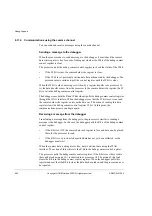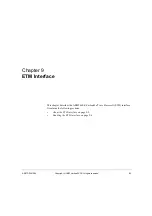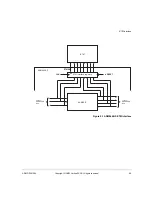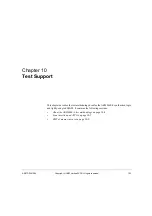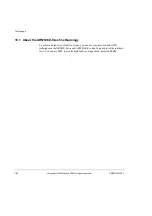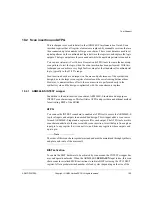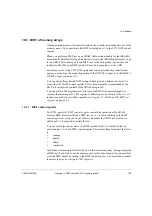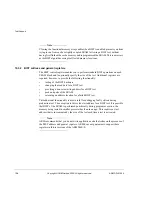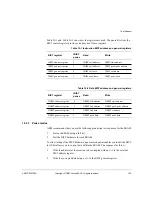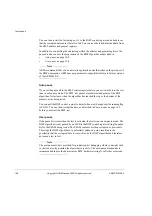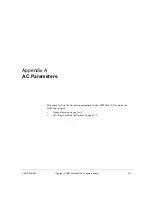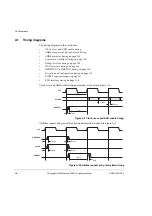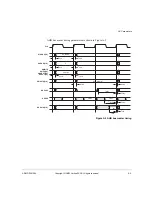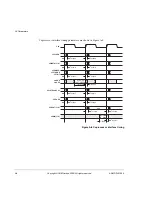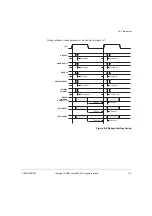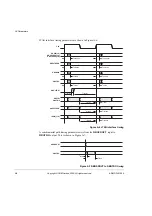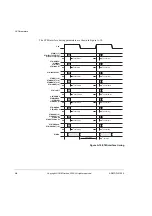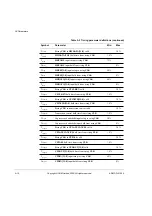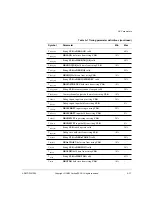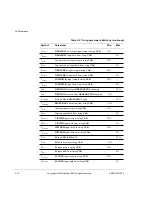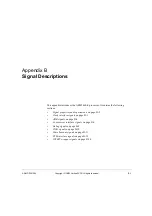
Test Support
10-8
Copyright © ARM Limited 2000. All rights reserved.
You can then restart the test using an
MCR
to the BIST control register and check to see
that the corrupted data causes the test to fail. You can read the fail address and data from
the BIST address and general registers.
In addition to controlling the addressing within the address and general registers, the
pause bit also controls the progression of the BIST algorithm as described in:
•
•
Note
ARM recommends that you do not write application code that relies on the presence of
the BIST pause mode. ARM does not guarantee to support this feature in future versions
of the ARM946E-S.
Auto pause
If you set the pause bit in the BIST control register before you activate the test, the test
runs in auto pause mode. The BIST test pauses at predetermined points of the BIST
algorithm, for instance when the algorithm has reached the top or the bottom of the
memory array being tested.
You can poll the BIST control register to detect when a test has paused (the running flag
is LOW). You can then corrupt the data, as described in Pause modes on page 10-7,
before you restart the BIST test.
User pause
If the pause bit is clear when the test is activated, the test is run in user pause mode. The
BIST algorithm is only paused by an MCR to the BIST control register setting the pause
bit for the SRAM being tested. The SRAM contents are then corrupted as previously.
This stops the BIST algorithm at a potentially unknown point, resulting in the
possibility that the corrupted data is overwritten by the BIST algorithm and therefore
not cause a test to fail.
Note
The user pause mode is provided for production test debugging where you might wish
to shorten a test by pausing the algorithm very early. The auto-pause mechanism is
recommended to provide deterministic BIST hardware testing for all other occasions.
Summary of Contents for ARM946E-S
Page 1: ...ARM DDI 0155A ARM946E S Technical Reference Manual ...
Page 6: ...vi Copyright ARM Limited 2000 All rights reserved ARM DDI 0155A 04 Limited Confidential ...
Page 54: ...Programmer s Model 2 34 Copyright ARM Limited 2000 All rights reserved ARM DDI 0155A ...
Page 70: ...Caches 3 16 Copyright ARM Limited 2000 All rights reserved ARM DDI 0155A ...
Page 78: ...Protection Unit 4 8 Copyright ARM Limited 2000 All rights reserved ARM DDI 0155A ...
Page 112: ...Coprocessor Interface 7 14 Copyright ARM Limited 2000 All rights reserved ARM DDI 0155A ...

